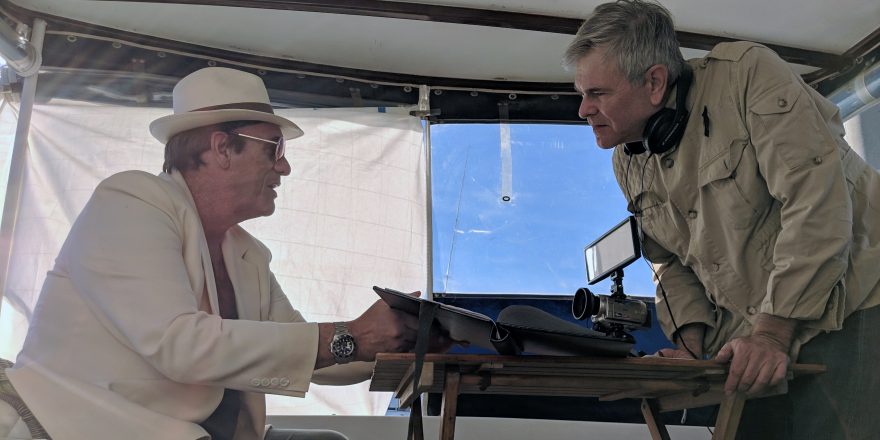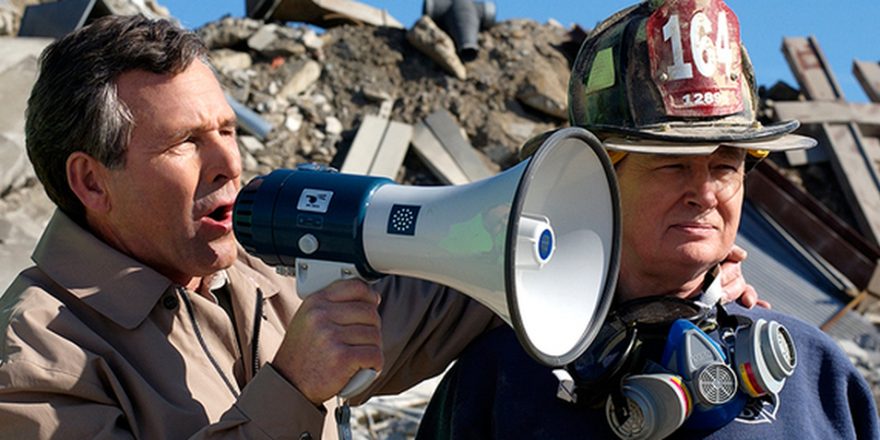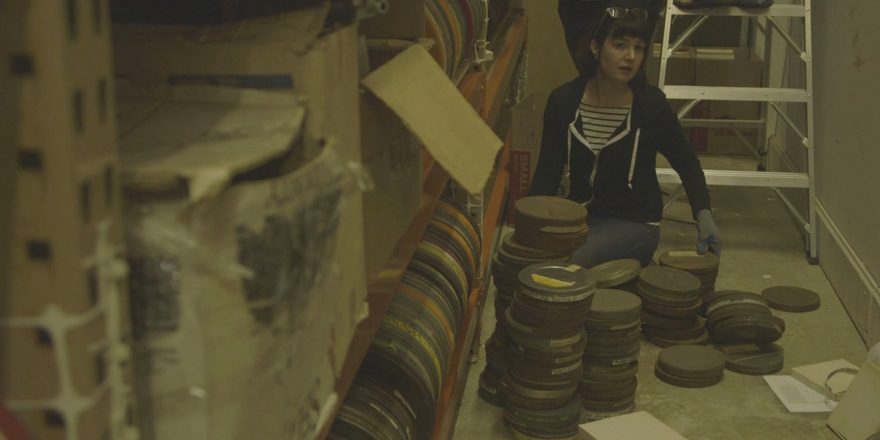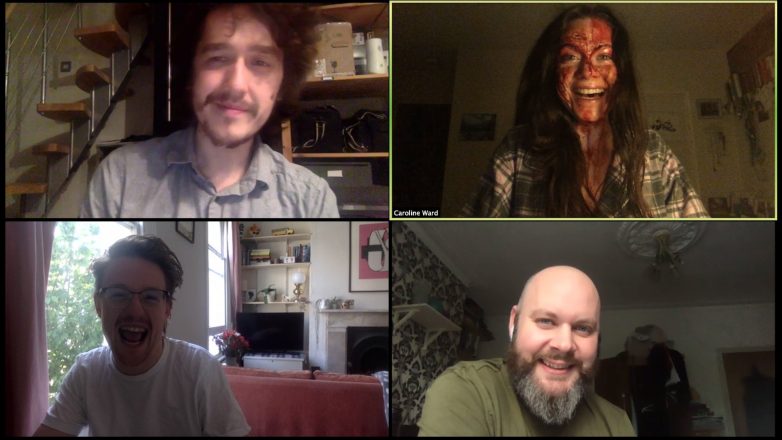It all started with the 2016 election. I was at the Napa Valley Film Festival showing a documentary I produced, The Lost City of Cecil B. DeMille, and was devastated as I sat in my hotel room watching the results coming in.
While in Napa, it dawned on me that I had worked on many other people’s films, but it had been almost two decades since I had made a film of my own. I’d spent much of this time unsuccessfully trying to get one particular project made.
It felt like I was running out of time. That I needed to do something right now. But how? I had very little disposable cash. I hadn’t been able to raise a nickel for the one project that had consumed me to exclusion of all others.
But I suddenly remembered Robert Rodriguez’s $5,000 debut feature, El Mariachi, and began to muse that I could make a film on a budget like that! I knew I could find a “name” actor to come on board for a day or two, and it would be worth it to pay them for their time in order to add some value to the production. This meant the budget would go up a little, but there is fortune in taking the first step.
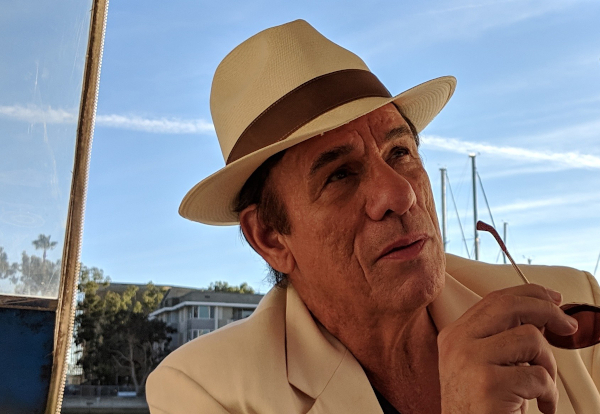
As a practicing Buddhist, I always infuse the stories I write with Buddhist values, and I was inspired by a parable entitled “The Eight Winds”: “Worthy persons deserve to be called so because they are not carried away by the eight winds: prosperity, decline, disgrace, honor, praise, censure, suffering, and pleasure. They are neither elated by prosperity nor grieved by decline. The heavens will surely protect one who is unbending before the eight winds.”
I thought it was a great title for a movie. I’ve always been a fan of noir, spy stories and tales of espionage where the plot is a chess game. This was the genre I wanted to play in.
At the Napa events, I spoke to several of the winery owners and locals, and there was a great deal of discussion about new water-rights legislation being enacted in California. As I was mulling what my film might be about, water was on my mind. Forget it, Dan, it’s Chinatown! But I realized that if you wanted to cripple or control an economy, attacking the water supply would be the way to go. There had been numerous stories about Russian interference in the election. My plot was thickening! The story that evolved was about an over-the-hill filmmaker, Charlie Nabis, who gets drawn into an intrigue involving Russian oligarchs, a reclusive billionaire and a nightclub owner dying of cancer.
I have always believed creativity outshines budget. In conceiving the story and writing the script, I had to write for what I could control, whether it was locations, actors, props and/or special effects. And when I say “control,” I mean beg, borrow, steal or own.
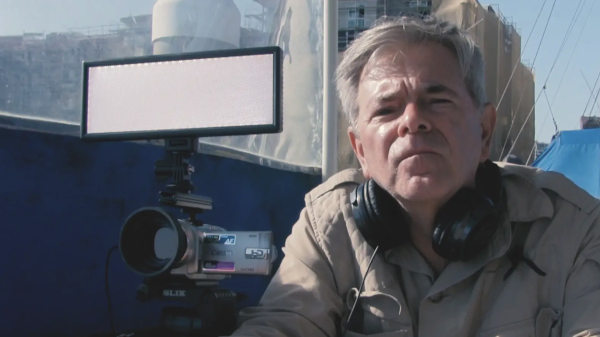
At this point, I still had a few festival dates left for my DeMille film. I had the idea to have someone film me as I was attending them. So I contacted the festivals and asked if they had any local videographers I could hire to film me. It was very low cost to hire them. This footage proved to be instrumental in establishing the character of Charlie Nabis.
I wanted to have a chase in my film! I had a vision of Charlie chasing the villain and turning the corner only to find a massive protest demonstration in his way.
But how could I get a demonstration when I had no money? Well, Los Angeles has an annual May Day march. My plan was to shoot the end of my chase against that event. (Here’s a behind-the-scenes video on how we did the chase.)
So, can you “steal” a demonstration for your film? The answer is yes! In his 1968 film Medium Cool, Haskell Wexler managed to capture very poignant and dramatic scenes with his actors against backdrop of the 1968 Chicago riots. In high school, I had made an award-winning film called The Incredibly Awful Doctor Sporgo, and in that film two characters marched into a parade dragging a kidnapped victim. We got the shot.
Next, I needed two name actors, one male, one female. To get a name actor, you need a great script, then you go on IMDbPro, find out who their agents or managers are, and call them when your script is finished and you have a start date. Be prepared to hear “no” a lot.
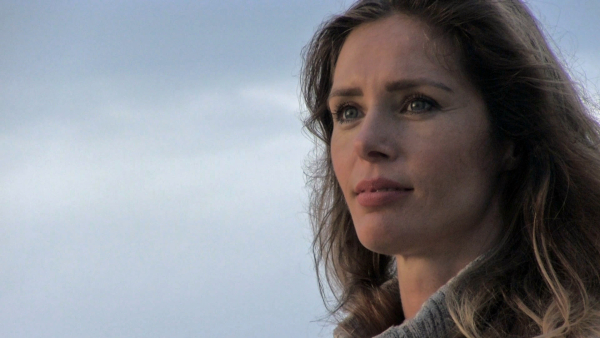
The role of America Afrides, the female lead, was not cast until the very end of our production. We actually ran out of things to shoot, so I had to shut down production for several weeks until I could find the right actress.
On hiatus, I took another look at the submissions we’d been sent and found Leona Paraminski, an actress who was well known in her country, Croatia. I remember something that producer Cassian Elwes had once told me: “Hire actors who are stars in their own territory. They all want to make American films, they add value to your project and won’t cost as much.”
I looked at Leona’s reel and was blown away, so I called her agent and sent her the script. Two hours later, I got a self-tape audition and it was spot-on perfect! The negotiations were pretty heated; at one point after her agent told me “no,” I was standing at a Los Angeles Metro station, about to shoot some pick-up shots for the chase. I was juggling the camera in one hand, the phone in the other. I ended up begging on my cell phone at the top of my lungs to get Leona in my film. Sometimes begging works! Her performance is amazing. (Here’s her behind-the-scenes video.)
Casting the role of John Conover was a roller coaster on its own. The submissions that I’d gotten were interesting. Some of my friends had connections to very well-known actors and were willing to reach out to see if they would come aboard. Unfortunately, all of them said no. However, their representatives would often make suggestions as to other clients who might fit the role. This was helpful, too. You always want to make representatives your friend as much as possible, because they often have a better idea of who is actually willing to work at the level you are proposing. Be realistic; it makes no sense to chase an actor who will never say “yes” because of the money, distribution or director’s credits. Previously, I worked with a very well-known actor with an amazing list of credits and had become friendly with his manager. Because he had fallen on hard times, his fee was in the ballpark of what we could pay. So we hired him.
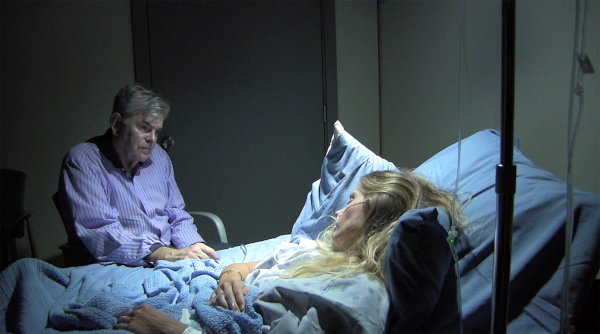
About six months later, while I was editing the film, I got a call from our distributor (yes, I had a distributor before the film was finished!), who said, “We have a problem.” I asked, “What is the problem?” “Check the news and call me.” I looked on the internet and saw that the actor was now being accused of sexual misconduct. We agreed to recast the role and reshoot the Conover character’s scenes.
I now found myself in the situation Ridley Scott had with Kevin Spacey on All the Money in the World – except I didn’t have all the money in the world. I had no idea how I would raise the money needed to hire another actor and reshoot the scenes.
I began shaking the money trees, though, turning over every opportunity I possibly could to find the money to reshoot those scenes and finish the film. As Jean Renoir said, “Only with the intervention of divine providence have I ever been able to find money for my films.” Eventually, luck smiled on me. It took me a year, but I had the money and could go shopping.
I reached out to the manager of a very well-known character actor and told him what I had in terms of a budget and he said, “No way.” He did suggest several other clients of his, though, including Robert Davi. We made the deal and reshot the scenes. Robert Davi is a real trouper; he showed up on time, ready to work, and despite our no-budget status, he really gave 100 percent. I’m truly grateful to him for that effort, and it shows in his performance. There are so many nuances, it just tickles me every time I see it. (Here’s his behind-the-scenes video.)
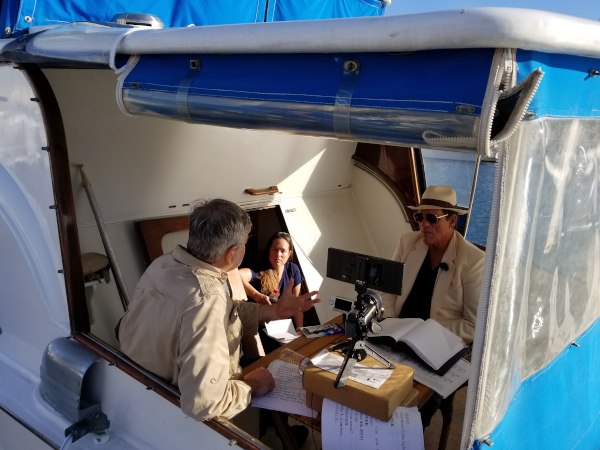
I was able to cut together Davi’s footage shot in 2019 together with the other footage I had. Fortunately, they worked seamlessly.
I edited 8 Winds myself on Adobe Premiere. Like writing the script, it is important to continuously hone and polish your film. There were ultimately about 13 cuts. As with the screenplay, I showed the successive cuts to people whose opinion I respected and got their notes.
At a certain point, you need to throw away the script and focus on the film you have. You must be ruthless when you’re editing. If it doesn’t move the story forward, it’s out! Hence some scenes and characters – including one of my favorites – were cut.
A month or two ago, our five-year journey came to an end when 8 Winds was finally released on demand, digital, DVD and wherever folks get their movies. To see my strategies implemented and tested, and the anticipation of world events that continue unfolding as predicted in the story, has been validating. Now that it is out in the world, I feel like someone who just rode a terrifying roller coaster: that was fun – let’s ride it again!
Featured image shows Dan Coplan with Robert Davi on the set of 8 Winds. All images courtesy Dan Coplan.


